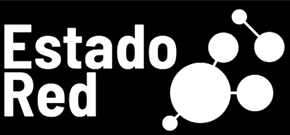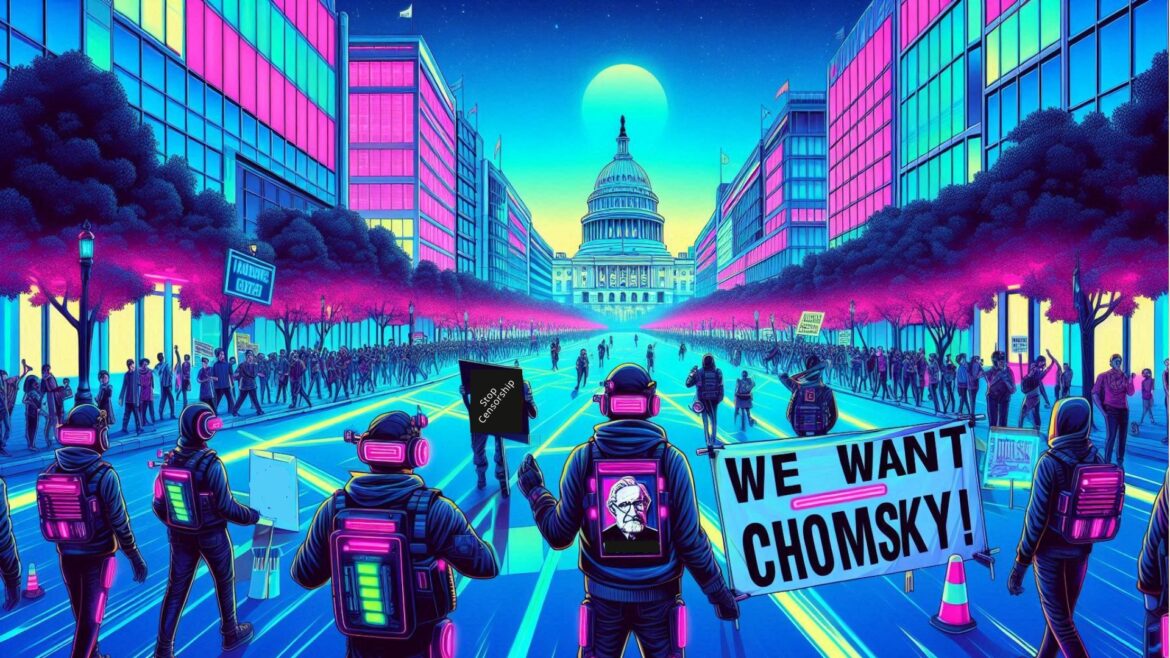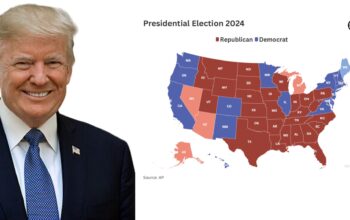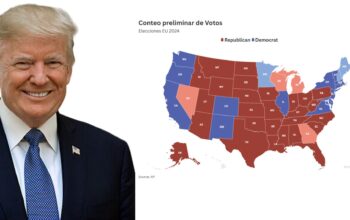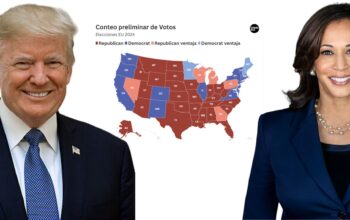In an increasingly interconnected world, disinformation has emerged as one of the major challenges within the digital public sphere. Under the premise of protecting democracy, states and technology corporations have articulated discourses that justify the regulation of content on social media platforms. However, this narrative presents a troubling paradox: is the fight against disinformation a mechanism to safeguard plurality or a strategy to consolidate hegemonic power in the global information ecosystem? This article explores how information control has become a tool to marginalize independent voices, perpetuate power structures, and redefine the rules of the digital public space.
Currently, the concept of disinformation has acquired unprecedented relevance in the political and regulatory discourses of the European Union and the United States. Under the pretext of safeguarding democracy and ensuring a healthy informational ecosystem, these powers have developed narratives that justify control over expressions on social media. However, this approach raises fundamental questions: Could it be operating as a tool to consolidate global communicative hegemony, restricting independent and alternative voices? The hypothesis presented here argues that disinformation is used as a strategic narrative to perpetuate power structures in the digital environment, under the apparent intention of combating threats to the democratic order.
Jesús Martín-Barbero emphasizes that communication is neither a neutral nor merely instrumental process, but is profoundly influenced by power structures and cultural contexts. In this sense, the narrative that people accept about disinformation arises from institutional mediations that legitimize interventions in the digital ecosystem. These interventions, though presented as necessary to protect the truth, tend to favor hegemonic actors who control technological infrastructures and information flows. In this way, the narrative of disinformation is not only used by state and corporate powers to regulate content on digital platforms, but also conditions the ways in which users participate and express themselves in a space that should be plural and democratic.
The idea of cultural hegemony, as explained by Antonio Gramsci, serves as a key axis in this discussion. Disinformation, in this context, is not merely an issue of the circulation of false content, but a tool for consolidating an ideological consensus that marginalizes alternative and dissenting narratives. In this way, states and technology corporations position themselves as guardians of truth, delegitimizing any discourse that challenges their power.
Carlos Scolari contributes to this discussion with a media ecology approach. His theory highlights how the contemporary media ecosystem consists of a multiplicity of interconnected platforms and actors, generating a convergence of narratives. In this context, the narrative of disinformation unfolds transmediatically, utilizing different platforms to construct a homogeneous discourse that amplifies its reach and effectiveness. This phenomenon not only reinforces the control of dominant actors but also reduces informational diversity by labeling narratives that do not align with hegemonic interests as «false.» For instance, the use of algorithms to identify «false» content becomes a standard practice that reinforces the power of large technological platforms.
Manuel Castells asserts that power is exercised through the control of digital networks and the information flows that traverse them. In this context, the narrative of disinformation functions as a policy of fear, designed to constitute a global threat that justifies the implementation of restrictive measures. These measures, such as algorithmic monitoring and selective censorship, consolidate the power of network programmers, who determine which discourses are considered legitimate and which voices are excluded from the digital public space.
The narrative of fear also has a psychopolitical dimension, as noted by Byung-Chul Han. According to this author, fear is instrumentalized to shape the perceptions and behaviors of users, neutralizing any form of dissent. In this sense, disinformation not only operates as an informational phenomenon but also as a mechanism of subjective control that ensures the stability of existing power structures.
Noam Chomsky, with his theory of the manufacture of consent, describes how elites use the media to legitimize singular narratives and delegitimize any opposition. In general terms, false consensus refers to the artificial perception that there is a majority agreement on certain ideas, values, or policies, when in reality this agreement has been manufactured or manipulated by those who hold power.
In the case of disinformation, a false consensus has been built around the idea that it is a product of a threat to democracy, without a theoretical framework to describe the problem. It has simply been established through a narrative driven unilaterally by international organizations, governments, civil organizations, political groups, and mass media. Among other things, the false consensus on disinformation has contributed to the reduction of discursive diversity, where independent and marginalized voices are systematically excluded.
Jürgen Habermas warns about the colonization of the public space, a dynamic that intensifies in the digital environment. Technological platforms, under the pretext of combating disinformation, implement policies that restrict plural deliberation and favor dominant actors. This colonization not only limits freedom of expression but also transforms the digital public space into an arena controlled by economic and political interests.
Disinformation, far from being an isolated or exclusively informational phenomenon, operates as a strategic narrative that consolidates hegemonic control in the digital ecosystem.
THE GAP IN THE DEBATE
There exists a critical gap in the disinformation debate: the omission of a profound epistemological and theoretical framework that analyzes the issue from the roots of communicative phenomena and their transformation in the digital age. This gap generates a limited interpretation, where the problem of disinformation is instrumentalized as a threat primarily directed against power structures, overlooking the more complex and structural processes that define how communication operates in the digital space.
By assuming disinformation as a political problem rather than a communicative one, the current debate seems to focus on how disinformation affects the stability of democratic institutions and established power, without exploring its intrinsic relationship with media ecology or the configuration of the network society. This reduces the analysis to a reactive perspective: the problem is not that disinformation exists as an inherent phenomenon of the communicative system, but that it affects those who control hegemonic discourses.
The shift from communicative analysis to normative focus reveals an epistemological rupture: communication has ceased to be viewed as a space for complex and multidimensional interaction and has become a regulatory tool. Attention is directed to the negative effects of disinformation on power, without considering how the very structures that produce this concern (network controllers, algorithms, platforms) are designed to perpetuate dynamics of exclusion, monopolization of discourse, and control.
DIGITAL INFORMATIVE HEGEMONY
Narratives about disinformation are used to consolidate cultural and political control in the digital environment, which can be defined as digital informative hegemony. Dominant institutions, such as states, technology companies, and traditional media, position themselves as the only entities capable of discerning between «true» and «false» information. This process builds a global consensus that delegitimizes other voices, relegating them to the margins.
In this hegemony, disinformation should not be seen merely as a problem of false data, but as a strategy to delegitimize expressions contrary to dominant power. In this sense, the narrative of disinformation functions as a hegemonic device that perpetuates discursive hierarchies in the digital ecosystem.
TRANSMEDIA DISCOURSE CONTROL
Narratives about disinformation operate as transmedia discourses designed to circulate across multiple platforms. Transmedia discourse control reinforces a unified and homogeneous view of the problem, amplifying its reach and establishing a global perception of disinformation as a threat.
The implication of this approach is that transmedia logic not only increases the diffusion of these narratives but also justifies the implementation of regulations that limit critical voices. Thus, discourse control transcends the boundaries of digital platforms.
COLONIZATION OF THE DIGITAL PUBLIC SPACE
The regulation of disinformation threatens the digital public space. In this sense, it transforms a plural and deliberative arena into a territory controlled by state or corporate interests. The narrative of disinformation is used here as a tool to impose rules that benefit hegemonic actors, excluding independents or dissenters.
This process limits democratic deliberation in the digital environment, reinforcing structural inequalities in access to and control over information.
ALGORITHMIC FEAR NARRATIVE
The fear of disinformation is used as a psychopolitical tool. This fear justifies the monitoring, censorship, and algorithmic control of social networks. Algorithms that filter «false» content become weapons of ideological control, shaping users’ perceptions and favoring the narratives of dominant actors.
STRATEGIC DISINFORMATION
Disinformation can also be used as a strategic weapon by the very actors who claim to combat it. By controlling the narrative, these actors label any discourse that does not align with their interests as «disinformation.»
Strategic disinformation operates as a mechanism to neutralize social movements, alternative media, and critical voices, all under the pretext of protecting democracies.
ASYMMETRIC INFORMATION ECOSYSTEM
In a media environment where power relations determine which information circulates freely and which is restricted, an asymmetric information ecosystem is generated. The narrative of disinformation reinforces this asymmetry, benefiting those who control technological infrastructures and data flows.
The central implication is that the fight against disinformation does not respond to neutral criteria, but is conditioned by the interests of those who dominate the global media ecosystem.
PARADOX OF INFORMATION REGULATION
The inherent contradiction in attempts to regulate disinformation is evident. Although presented as measures to protect democracy, these regulations often result in the concentration of discursive power and the erosion of freedom of expression.
This approach underscores the need for a critical analysis of these regulations to ensure that they do not end up consolidating inequalities in access to information.
To address this issue more profoundly, it would be crucial to recover the voices of theorists who defined the digital space as an extension of the communicative ecosystem. This implies analyzing how the production, distribution, and consumption of information are linked to phenomena such as media concentration, internet governance, and new forms of digital colonialism. It is also necessary to rethink the role of the digital citizen, not as a passive consumer, but as an active agent capable of intervening and transforming these spaces.
